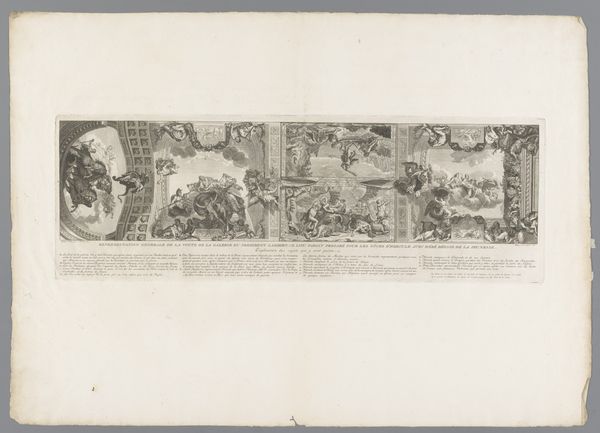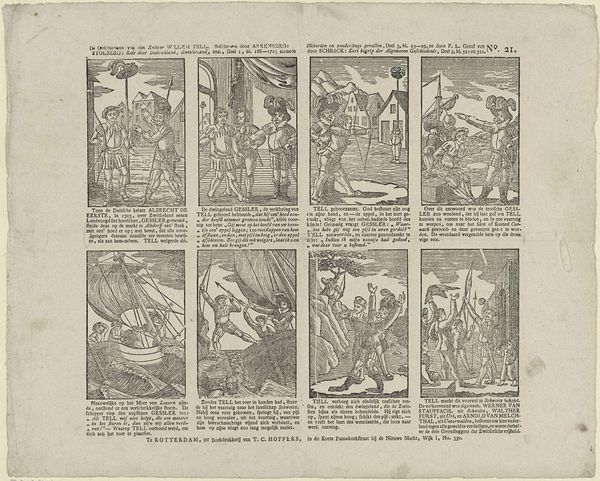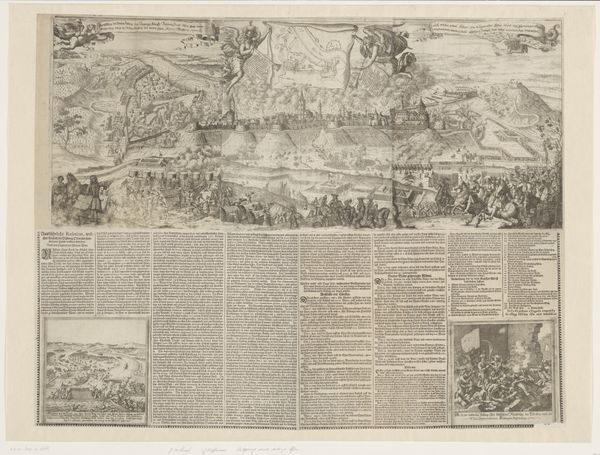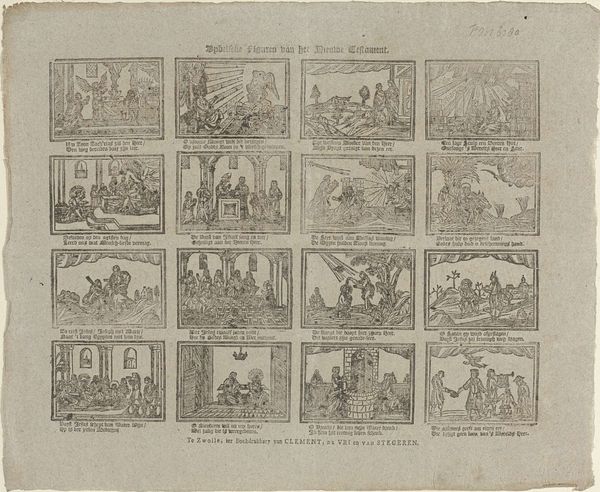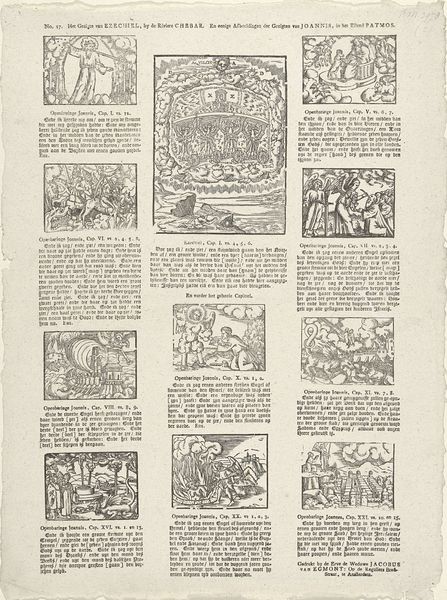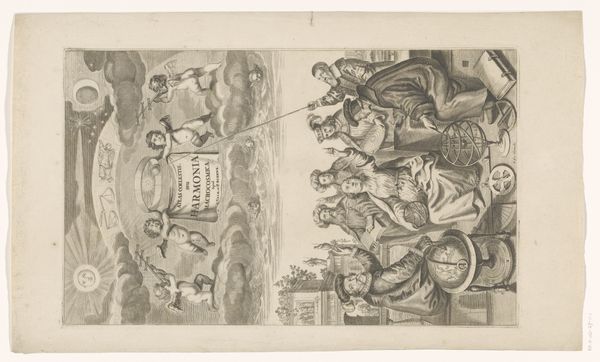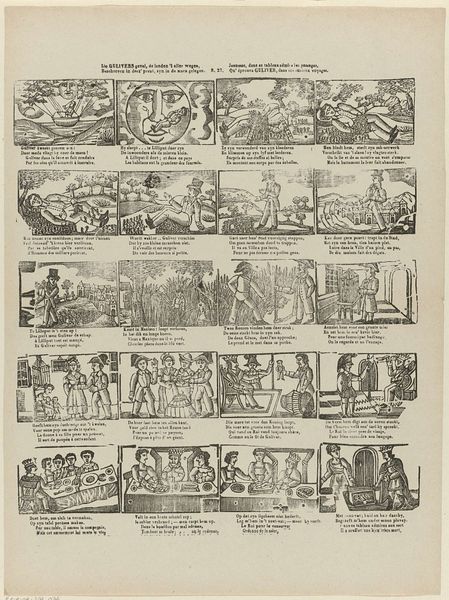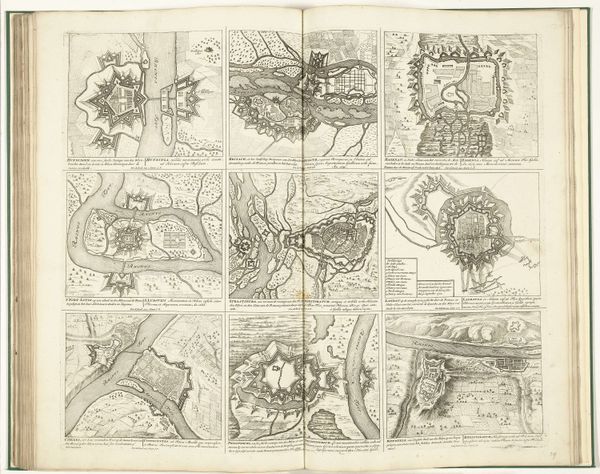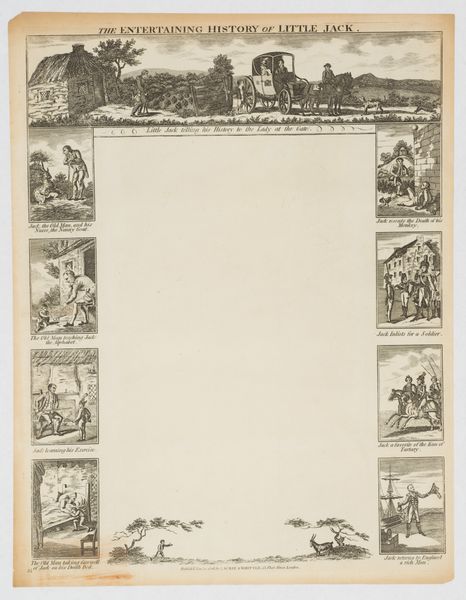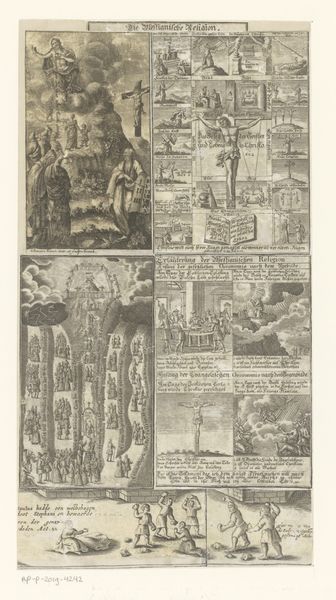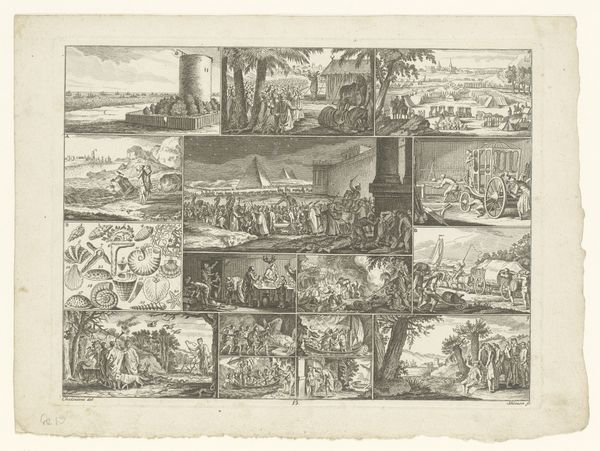
Historische kaart van de Nederlanden met afbeeldingen van het dagelijkse leven van de Germanen 1617
0:00
0:00
drawing, print, ink, engraving
#
drawing
#
light pencil work
# print
#
old engraving style
#
sketch book
#
hand drawn type
#
landscape
#
figuration
#
personal sketchbook
#
ink
#
pen-ink sketch
#
ink colored
#
pen work
#
sketchbook drawing
#
history-painting
#
sketchbook art
#
engraving
Dimensions: height 151 mm, width 514 mm, height 435 mm, width 547 mm
Copyright: Rijks Museum: Open Domain
Curator: Ah, here we have Pieter van der Keere’s "Historische kaart van de Nederlanden met afbeeldingen van het dagelijkse leven van de Germanen" from 1617. This engraving at the Rijksmuseum offers quite the historical perspective. Editor: My initial reaction is that it feels… meticulously archaic. The density of the linework and the almost clinical presentation gives the whole image a very factual yet dreamlike quality. Curator: It's designed to do just that. Van der Keere intended to present not just a map, but a comprehensive understanding of the region and its people. The "daily life of the Germanen," of course, are largely interpretations based on classical accounts filtered through a 17th-century lens. We see here how the cultural imagination shaped historical narratives. Editor: Yes, and the composition reinforces this idea of 'narrative'. The placement of the map next to the six vignettes portraying these 'Germanen' almost implies a causality, as though the geographical space inherently dictates the human action. Look at how the figures are rendered. Their gestures are almost exaggerated, theatrical. Curator: Exactly! It's a visual argument about the nature and origins of the Dutch people. Consider the context: the Dutch Republic was still defining its identity and justifying its rebellion against Spain. Van der Keere's engraving participates in that process of nation-building, by visualizing a heroic, independent past rooted in the land. Editor: But is the history here necessarily accurate or purely symbolic? Note how the artist stylistically flattens the space. Look, in the 'sacrifices' scene, the bodies become graphic elements used almost rhythmically, not naturalistic people caught in a particular moment. It feels staged. Curator: It's absolutely a selective presentation, playing into contemporary political sentiments and desires. These images would certainly evoke notions of valor and a shared ancestral legacy. This speaks to how cartography, art, and political ideology were intrinsically linked. Editor: I see your point. What seemed to me purely about form is instead more clearly an act of persuasion, framed using the aesthetic of historical record. Curator: And understanding the socio-political motivations enriches our understanding of the aesthetic choices. It prompts us to think critically about the making of history. Editor: A fitting reminder of how art is never just *art*, but rather a conversation across centuries, always deeply contextual.
Comments
No comments
Be the first to comment and join the conversation on the ultimate creative platform.

